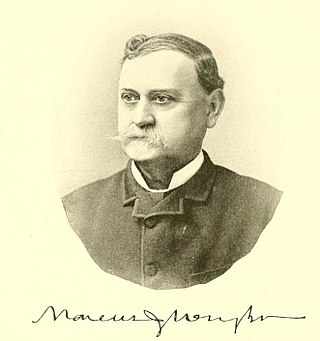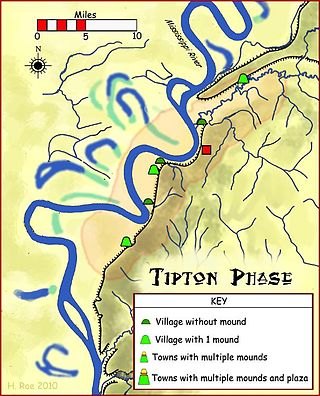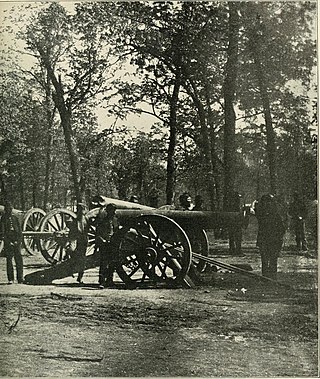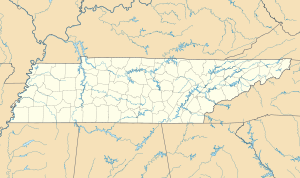
Nathan Bedford Forrest was a Confederate Army general during the American Civil War and the first Grand Wizard of the Ku Klux Klan from 1867 to 1869.

Fort Pillow State Historic Park is a state park in western Tennessee that preserves the American Civil War site of the Battle of Fort Pillow. The 1,642 acre (6.6 km²) Fort Pillow, located in Lauderdale County on the Chickasaw Bluffs overlooking the Mississippi River, is rich in both historic and archaeological significance. In 1861, the Confederate army built extensive fortifications and named the site for General Gideon Johnson Pillow of Maury County. It was attacked and held by the Union Army for most of the American Civil War period except immediately after the Battle of Fort Pillow, when it was retaken by the Confederate Army. The battle ended with a massacre of African-American Union troops and their white officers attempting to surrender, by soldiers under the command of Confederate Major General Nathan Bedford Forrest.

The Battle of Fort Pillow, also known as the Fort Pillow massacre, was fought on April 12, 1864, at Fort Pillow on the Mississippi River in Henning, Tennessee, during the American Civil War. The battle ended with Confederate soldiers commanded by Major General Nathan Bedford Forrest massacring U.S. Army soldiers attempting to surrender. Military historian David J. Eicher concluded: "Fort Pillow marked one of the bleakest, saddest events of American military history."

The Battle of Selma was fought on April 2, 1865 in Dallas County, Alabama during the American Civil War. It was part of the Union campaign through Alabama and Georgia, known as Wilson's Raid, in the final full month of the Civil War.
The Battle of Dover, also known as the Second Battle of Fort Donelson, was a battle of the American Civil War, occurring on February 3, 1863, in Stewart County, Tennessee.

Columbus-Belmont State Park, on the shores of the Mississippi River in Hickman County, near Columbus, Kentucky, is the site of a Confederate fortification built during the American Civil War. The site was considered by both North and South to be strategically significant in gaining and keeping control of the Mississippi River. It commemorates military actions in Columbus, Kentucky, and across the river in Belmont, Missouri. This is 1 of 3 state parks in Kentucky that will be in the path of totality for the April 8, 2024, total solar eclipse.
Selma, Alabama, during the American Civil War was one of the South's main military manufacturing centers, producing tons of supplies and munitions, and turning out Confederate warships. The Selma Ordnance and Naval Foundry complex included a naval foundry, shipyard, army arsenal, and gunpowder works. Following the Battle of Selma, Union Maj. Gen. James H. Wilson's troops destroyed Selma's army arsenal and factories, as well as much of the city.

Edmund Winchester Rucker was a Confederate officer during the American Civil War. After the war he became an industrial leader of Birmingham, Alabama. Fort Rucker - now Fort Novosel, in Alabama was previously named in his honor.

Marcus Joseph Wright was a lawyer, author, and a Confederate general in the American Civil War. He was agent for collection of Confederate records for War of the Rebellion: Official Records of the Union and Confederate Armies, a U.S. War Department publication.

Randolph is a rural unincorporated community in Tipton County, Tennessee, United States, located on the banks of the Mississippi River. Randolph was founded in the 1820s and in 1827, the Randolph post office was established. In the 1830s, the town became an early center of river commerce in West Tennessee. Randolph shipped more cotton annually than Memphis until 1840. In 1834, the first pastor of the Methodist congregation was appointed. The fortunes of the community began to decline in the late 1840s due to failed railroad development, an unfavorable mail route and other factors. The first Confederate States Army fort in Tennessee was built at Randolph early in the Civil War in 1861, a second fortification at Randolph was constructed later that same year. During the Civil War, the town was burned down twice by Union Army forces.
The Pointe Coupee Artillery was a Confederate Louisiana artillery unit in the American Civil War made up primarily of men from the parishes of Pointe Coupee, East Baton Rouge, Livingston and other surrounding parishes as well as a large number of men from New Orleans.

Randolph is an unincorporated rural community in Tipton County, Tennessee, United States, located on the banks of the Mississippi River. The lands of the Mississippi River Basin were inhabited by Paleo-Indians and later Native American tribes of the Mississippian culture for thousands of years. The Tipton phase people and the Chickasaw Indian tribe populated the Mississippi River valley near Randolph during the Mississippian period. In 1541, Spanish explorer Hernando de Soto crossed the Mississippi River at or near Randolph. French explorer Cavelier de La Salle built the first French fortification at or near Randolph on his 1682 canoe expedition of the Mississippi River.

Fort Randolph was a Confederate Army fortification built in 1861 during the Civil War. Fort Randolph was located on the second Chickasaw Bluff at Randolph, Tipton County, Tennessee.

William Young Conn Humes was an American educator, lawyer, and soldier. He served as a Confederate cavalry general during the American Civil War, in which he was wounded twice, and fought mainly in the Western Theater of the conflict. Afterward Humes resumed practicing law until his death.
3rd Indiana Battery Light Artillery was an artillery battery that served in the Union Army during the American Civil War.
The 3rd Arkansas Light Artillery, also known as the Jackson Light Artillery (1861–1865), was a Confederate Army artillery battery during the American Civil War. The battery spent the majority of the war serving in Confederate forces east of the Mississippi River. The battery is also known as McCown's Battery, Hubbard's Battery, and Thrall's Battery in official reports.
Pillow Flying Artillery was a Tennessee battery of artillery in the Confederate Army in the early years of the American Civil War. It was mustered into service in Memphis and likely outfitted at Fort Pillow, Tennessee. Also known as Miller's Tennessee Battery, it was reported by Gen. Albert Sidney Johnston as arriving at Bowling Green, KY, from Columbus, KY with an aggregate of 70 men. Records of this battery exist from 1861. The battery is not mentioned in any records after May 1862.
89th Indiana Infantry Regiment was an infantry regiment that served in the Union Army in the Western Theater of the American Civil War.

Battery B, 2nd Illinois Light Artillery Regiment was an artillery battery from Illinois that served in the Union Army during the American Civil War. The battery was organized in June 1861. It fought at Shiloh, First Corinth, and Second Corinth in 1862. Subsequently, the unit garrisoned Corinth, Mississippi until January 1864. It was stationed at Memphis, Tennessee until June 1864 when it fought at Brices Cross Roads. The battery garrisoned Memphis until it was mustered out in July 1865.














